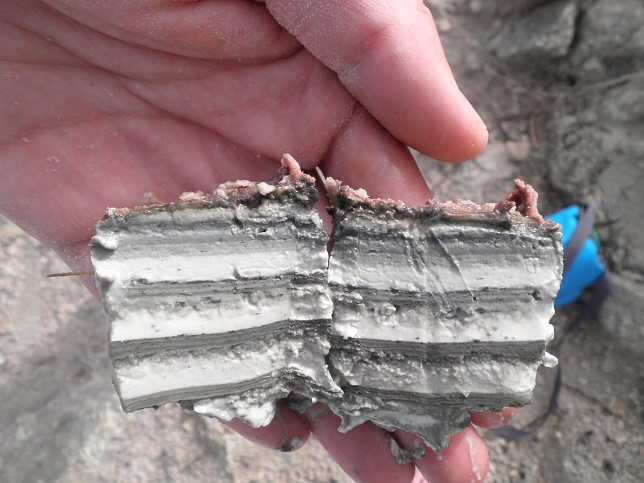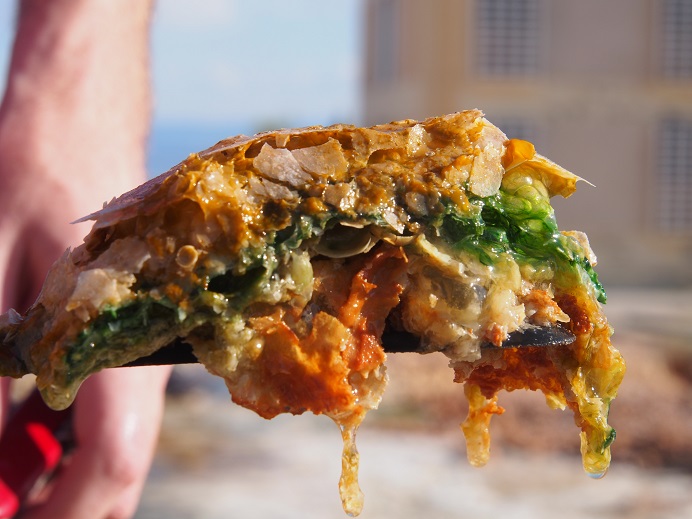My Research
I am a geomicrobiologist with a geology background, interested in the impact of microbial communities on sedimentary environments. My main playground is lakes and their sediment. Lakes are diverse systems, that host immense potential for paleoclimatic and paleoenvironmental reconstructions. But the processes influencing the deposition, preservation and transformation (early diagenesis) of their sediment are also diverse and complex. Subsurface microbial communities are the main actors in this environment. Hence, understanding their diversity, structure and activity is fundamental in order to access the full potential of lacustrine sediments as paleoclimatic archives.
We use a panel of classic methods from geology (microfacies analysis, scanning electron microscopy, geochemical characterization of minerals and organic matter) and biology (epifluorescence microscopy, DNA and RNA analysis through gene quantification and sequencing,) to apply cutting edge approach to the field of geomicrobiology.
Research Interests
#geomicrobiology #sedimentology #molecularbiology #organicgeochemistry
Projects
Ironlake, Lake Fagnano
Lago Fagnano is an iron rich lake that exhibits a unique and anthropogenically undisturbed sedimentary record for the South American region. Within the ironlake project, our goal is to constrain the modality of formation of iron minerals within iron-rich laminae in order to use iron isotopes as a proxy for climatic reconstructions. The analysis of active microbial communities involved in the iron cycle and their contribution to the formation and dissolution of iron minerals will be investigated to constrain the usage of lago Fagnano’s sediments as climatic archives.
#paleoclimate #organomineralization #iron #earlydiagenesis
Life under the Ice, Lake Onego
Boreal and sub-boreal lakes are important contributors to greenhouse gases (CO2, CH4) to the atmosphere. However, most global budget are calculated based on icefree periods, while most of these akes are ice-covered during a large part of the year. In collaboration with the Northern Water Problems Institute of Karelia, and a network of western-European universitites, we try to understand what are the parameters influencing microbial communities structural and functional diversity in relation to the methane cycle in the ice-covered Onego lake, in Russia.
#methanogenesis #AOM #microbialecology #trophicsystem
You can read more about this project here
Dead Sea Deep Drilling Project
The DSDDP is an ICDP-funded drilling project that aims at reconstructing the paleoenvironments and paleoseismicity of the Levantine region during the last 250 ka.
Microbes are the only form of life in this hypersaline environments. The unique archives of the deep Dead Sea Basin have revealed that microbial communities differed based on specific sedimentary facies representative of distinct limnological and paleoenvironmental conditions. Our analysis highlights the importance of applying geobiological approach within such pluridisciplinary projects to account for the microbial imprint on paleoclimatic archives.
#extremophiles #hypersaline #geomicrobiology #paleoenvironments #organominerals
You can find related publications here
ICDP-SCOPSCO project, Lake Ohrid
I am taking part in the effort of describing and understanding the paleobiologic and paleoclimatic unicity of Macedonian lake Ohrid, within the ICDP-funded SCOPSCO project. I apply a microbial ecology approach by comparing microbial communities present in deep sedimentary intervals corresponding to distinct climatic stages. Our goal is to gain insights into the way microbial communities assembly in deep sediments.
#microbialecology #diversity #paleoenvironments #assembly
You can access the ICDP project page here
Greek Travertine, Evia, Greece
The impact of microbial communities on the geological record has existed since the origin of life. An extraordinary example of this impact is banded iron formation that form today the main iron ore deposits on earth. By applying geochemical and geomicrobiological approach to a iron-rich travertines from a continental hot spring in the Greek Island of Evia, we investigate the processes of formation of iron-rich laminae as potential analogs to BIF deposits.
#thermophiles #organomineralization #travertine #ironoxidation
BaCyGe, Lake Geneva
Microbes also deeply influence biogeochemical cycles in your backyard. Recent discoveries have shown that algal species in lake Geneva have the potential to concentrate metals in their cells by forming carbonate micropearls. I participate in the effort to identify these organisms and the processes leading to such accumulation of metaloids.
#biomineralizations #micropearls #barium #strontium #lakegeneva #algae
The first publication from this project came out recently in Geobiology





